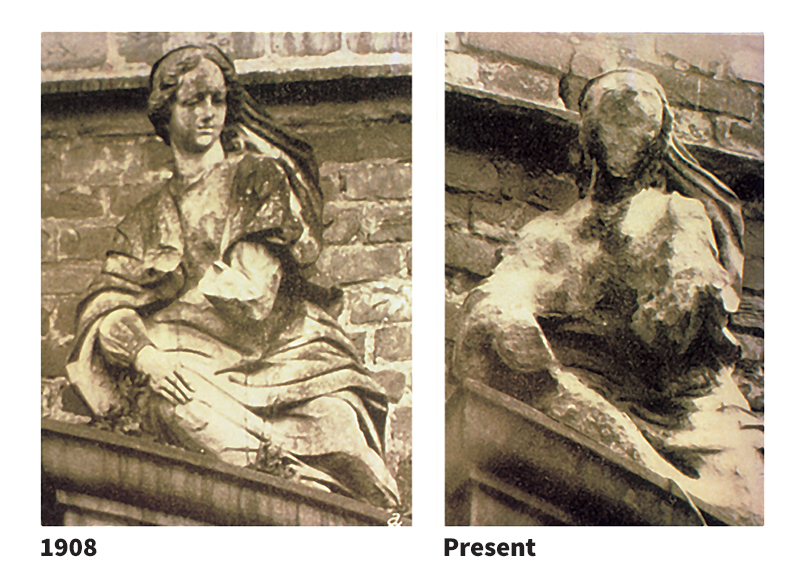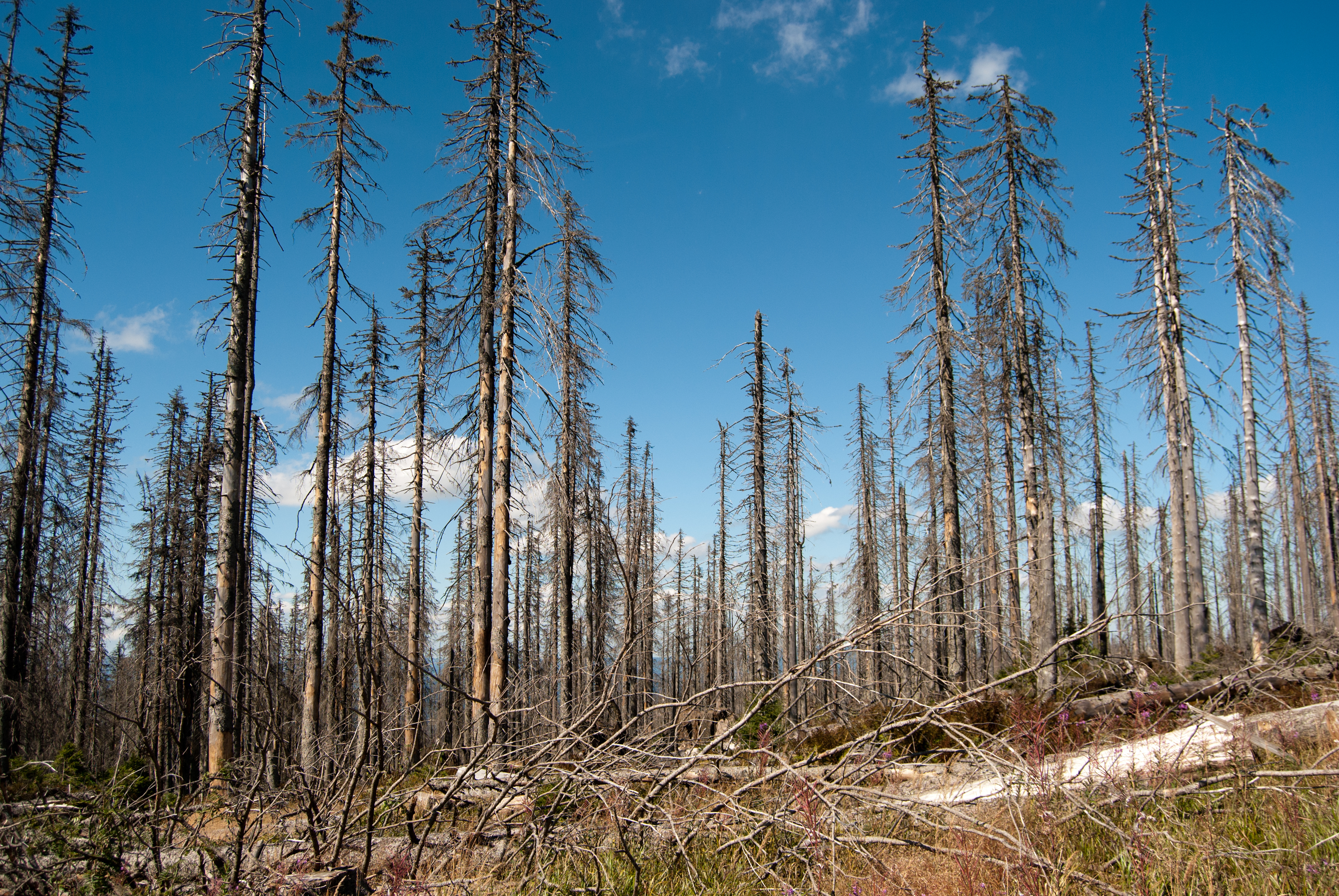Acid rain is precipitation that has become acidic. It is caused by pollution in the air. The term also includes acidic sleet and snow. Acid rain harms thousands of lakes, rivers, and streams worldwide. It kills fish and other wildlife. It also damages buildings, bridges, and statues. High concentrations of acid rain can harm forests and soil.

Acid rain forms when water vapor in the air reacts with certain chemical compounds. For example, sulfur dioxide reacts to form sulfuric acid. Nitrogen oxide reacts to form nitric acid. Such compounds come largely from the burning of fossil fuels. Fossil fuels include coal, gasoline, and oil. Most automobiles, factories, and power plants burn such fuels for energy. Many regions of the world are affected by acid rain. They include large parts of eastern North America, northern and central Europe, and parts of Asia. Tall smokestacks in urban areas have enabled winds to spread more pollutants further away. They have thus increased the spread of acid rain into rural areas.
Scientists and engineers have developed ways to reduce the acidity of rain. For example, several kinds of devices remove sulfur and nitrogen compounds from fuels or industrial emissions. The compounds are removed before they reach the atmosphere. Adding lime to lakes and rivers and their drainage areas temporarily neutralizes their acidity. But the neutralization may have harmful side effects.

In 1990, the United States Congress amended the Clean Air Act of 1970 to reduce acid rain in the United States and Canada. The amendments tightened emissions standards. They also required fuels that burn more cleanly. In 1999, the World Health Organization published air quality guidelines designed to reduce acid rain and other environmental problems.
See also Air pollution.
